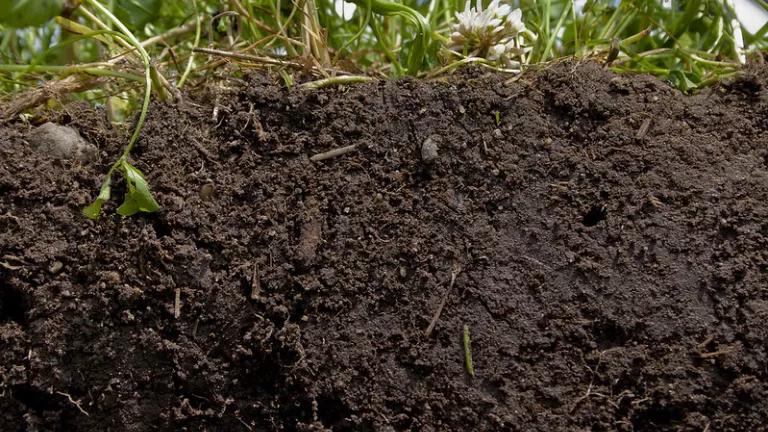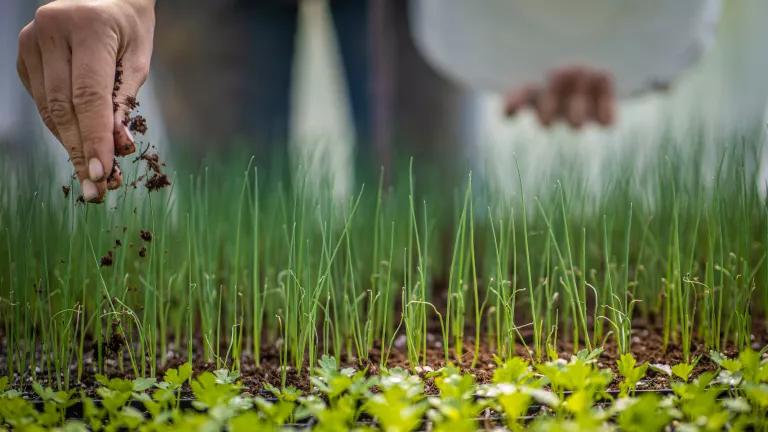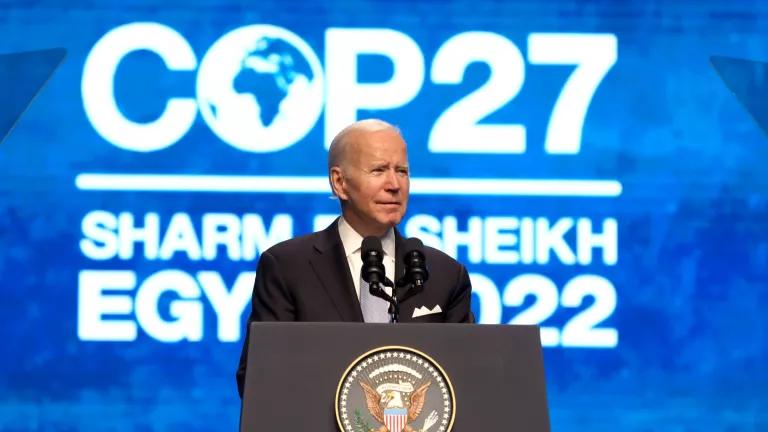How to Maximize IRA’s Investments in Farmers and Agriculture
President Biden’s Inflation Reduction Act (IRA) makes a historic $20 billion investment in agricultural conservation programs.

President Biden’s Inflation Reduction Act (IRA) makes a historic $20 billion investment in agricultural conservation programs that offer substantial opportunities to mitigate agriculture’s contributions to climate change, and provide huge down payments to bolster regenerative agriculture and soil health as tools for combatting the climate crisis. This funding will play a big role in helping farmers and ranchers build soil health. These same federal conservation programs also promote biodiversity, build and protect habitats for pollinators, clean downstream waterways, and reduce on-farm emissions. Unfortunately, demand for federal agricultural conservation programs exceeds available funding, underscoring the need for continued investments as well as strategic plans to maximize environmental benefits and mitigate risk for farmers. The IRA is an opportunity for the federal government to prioritize and amplify the benefits of regenerative and organic agriculture. Here’s how:
Prioritize Funds for Grants Using Multiple Soil-Building Practices Simultaneously
Across its conservation grant programs, the USDA should incentivize applying for grants that fund the use of multiple soil building practices to maximize the ecosystem benefits of conservation agriculture funding and fight the climate crises. Regenerative agriculture empowers and encourages farmers to use multiple practices that build soil health at once, because by doing so, farmers can achieve multiple ecosystem benefits on their farm. For example, by combining compost application with cover crops, farmers can store greater amounts of carbon deeper in the soil. Adding compost to soil also improves physical properties of soil such as enhancing the soil’s water-holding capacity and drainage, and increasing its nutrient retention capabilities.
The Conservation Stewardship Program (CSP) is one conservation program that states that farmers wanting to take their conservation stewardship to the next level can apply for grants that bundle multiple soil building practices under one grant application. While 6 million acres of cropland in the US leverage at least one regenerative practice under the CSP program in 2021, only 1% of the total cropland under CSP uses multiple practices.
Expand Cover Crops
Cover crops are a tremendously beneficial and regenerative soil health practice, helping make farms more resilient to climate change and drought, reducing water pollution from farm runoff, and improving below-ground biodiversity while growing habitat for wildlife. Cover crops are also relatively easy for farmers to grow without a lot of technical assistance, and they work in a variety of different cropping systems and regions, making them easy to scale up.
Cover crop use is increasing, but there is still a lot of ground to cover. According to USDA, only about 5% of harvested cropland uses cover crops as of the 2017 agricultural census. The IRA presents a unique opportunity to take nationwide cover crop adoption to the next level.
Prioritize Funding for Agroforestry
Agroforestry–the planting of trees via riparian forest buffers, silvopasture, alley cropping, forest farming, and/or windbreaks–is a form of regenerative agriculture where growers combine agriculture and forestry. Restoring trees, shrubs, and perennials to farms and ranches offers some of the highest per acre climate savings available, while offering a host of habitat, resiliency, and economic benefits. One study states agroforestry has the potential to offset up to a third of the U.S.'s carbon emissions each year!
The IRA makes nearly $5 billion available through the Regional Conservation Partnership Program (RCPP) and $1.4 billion through the Agricultural Conservation Easement Program (ACEP), which could be used to supercharge efforts to advance agroforestry and other perennial agriculture practices.
Fund a centralized, accessible, and regularly updated national soil monitoring program and database
In addition to storing more carbon and water, regeneratively managed soils promote biodiversity, protect against diseases, and boost yield stability in the face of a changing climate. To fully understand the impacts of regenerative agriculture, it is important to measure and track changes in soil quality, including measurements such as soil organic carbon, mineralizable carbon, and aggregate stability. Unfortunately, consistent soil sampling and soil health data are spread across multiple databases and programs, including the NRCS Soil Survey, Long Term Agricultural Research Network, and Climate Hub networks. The lack of centralized and standardized soil sampling information prevents us from understanding and measuring the benefits of agricultural practices over time.
The federal government should invest in a centralized, accessible, and regularly updated national soil monitoring program and database to better track progress over time. Furthermore, federal agricultural conservation programs should feed information about the outcomes of their grants into that database to better understand the environmental benefits achieved with federal funding. The IRA, for example, provides $300 million for USDA to assess the climate benefits of healthy soil, including quantifying and validating field practices for soil and carbon management. USDA should take a page from Carbon180’s Soil Carbon Moonshot framework, and use IRA funds to sample soils across the country, and enter the results into a publicly available database.






